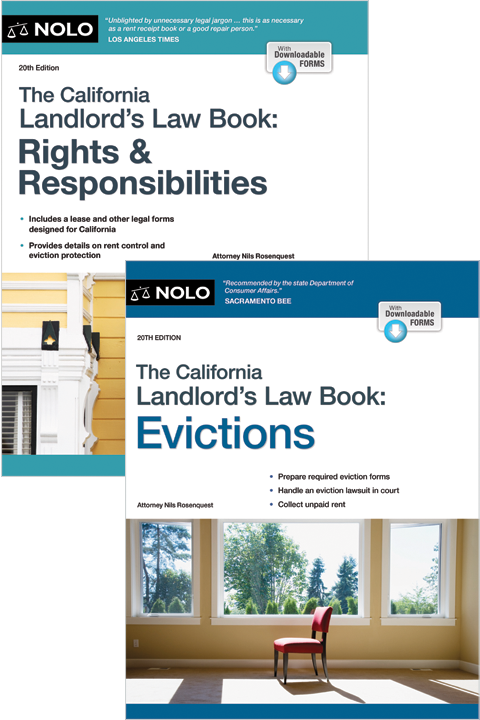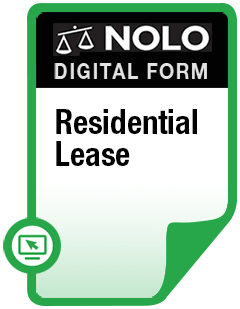Here's what Colorado landlords and tenants need to know about mold and the law.
Every landlord should take mold seriously. A top environmental hazard, mold thrives in warm, damp places, and often grows quickly in basements, attics, and other parts of buildings with poor ventilation and humidity problems. Although mold is often associated with buildings in wet climates, no rental property is immune from a mold outbreak, as one can occur following an unattended spill, faulty plumbing, or even a misdirected lawn sprinkler.
If you own or manage a rental property in Colorado, a mold problem could present you with costly cleanup and repair bills as well as lawsuits from tenants claiming that the mold made them ill.
If you're a tenant, it's important for you to understand your rights—and responsibilities—when it comes to the presence of mold in your rental.
Tenants' Responsibilities Regarding Mold in Rentals
Colorado law requires tenants to use their rental in a "reasonably clean and safe manner." This duty includes having to use all ventilating systems—which could affect the growth of mold—in a reasonable manner. The law also requires tenants to promptly notify their landlord if the rental becomes uninhabitable or has a condition that could make the rental uninhabitable if it's not fixed. (Colo. Rev. Stat. § 38-12-504 (2024).)
Landlord Liability for Mold in Colorado
There is currently no federal law covering a landlord's responsibilities when it comes to mold. However, Colorado law states that landlords must provide premises that are fit for human habitation at the beginning of the tenancy, and maintain this fitness throughout the tenancy. This is known as the "warranty of habitability."
As part of their duty under the warranty of habitability, Colorado landlords must take remedial action when they have notice of:
- mold associated with dampness or
- any condition causing the rental to be damp that could, if not fixed, create mold.
The landlord must take action within 24 hours if the situation materially interferes with the tenant's life, health, or safety. If the situation renders the rental uninhabitable but doesn't interfere with health and safety, the landlord must take action within 72 hours of receiving notice.
Required Landlord Action Upon Receiving Notice of Mold
After receiving notice of the presence of mold, Colorado landlords must perform all of the following tasks (if applicable):
- Within 72 hours, mitigate immediate risk from mold by installing a containment system, stopping active sources of water contributing to the mold, installing a high-efficiency particulate air filtration device to reduce the tenant's exposure to mold.
- Maintain the containment system throughout the remediation and repair process.
- Establish any additional appropriate protections for workers and occupants.
- Eliminate or Limit moisture sources and dry all materials impacted by the mold or dampness.
- Decontaminate or remove materials damaged by mold or dampness.
- Evaluate whether the rental has been successfully remediated, which includes testing post-remediation for the existence of mold.
- Restore the rental to a state that controls sources of moisture to prevent or limit the recurrence of mold or dampness.
If the presence of mold interferes with the tenant's life, health, or safety, the landlord must provide (at the request of the tenant) a comparable temporary rental or hotel room. If the tenant's displacement lasts longer than 48 hours, the landlord must ensure that the temporary residence has a refrigerator with a freezer and a range stove or oven or provide a daily stipend for meals. (Colo. Rev. Stat. § 38-12-503 (2024).)
Tenant Self-Help Strategies in Colorado
Colorado law gives tenants the following options when a landlord breaches the warranty of habitability by allowing mold to persist in a rental.
Terminate the Tenancy
A tenant can break their lease without responsibility for paying further rent if the mold remains unmitigated and the tenant provides the landlord 10 to 60 days' written notice that states:
- the issue that remains unremedied
- the tenant's intent to break the lease and move out, and
- the date upon which the tenant plans to move out (the date must be at least 10 days after the notice is provided to the landlord).
If the landlord violates the warranty of habitability for a second time within 6 months after the mold was mitigated, within 30 days of the reoccurrence of the mold the tenant can move out without penalty as long as the tenant:
- gives the landlord 10 days' written notice that the same condition has occurred, and
- provides the landlord with the date on which the tenant plans to move out (the date must be at least 10 days after the notice is provided to the landlord).
(Colo. Rev. Stat. § 38-12-507(1)(b) (2024).)
Repair and Deduct
Under Colorado law, tenants might be able to take care of the mold themselves and deduct the cost from their rent. Tenants must give the landlord 10 days' advance written notice of their plan to hire a licensed or qualified professional to remediate the mold. (If the tenant has a good faith belief that the mold is interfering with their life, health, or safety, they can give just 48 hours' advance written notice.)
If the landlord fails to remedy the situation or provide the tenant with a temporary residence, the tenant can hire a professional to perform the work. The tenant can withhold the cost of mitigation from rent as long as the tenant didn't hire a relative to do the work and provides the landlord with an invoice within a reasonable amount of time after the work is finished (or within 30 days of the landlord's request for a receipt). (Colo. Rev. Stat. § 38-12-507(1)(c)(I) (2024).)
Sue the Landlord
When mold is present and the landlord doesn't mitigate it, the tenant might be able to sue their landlord. If successful, the tenant could collect from the landlord the costs of any damages caused by the presence of mold, as well as any reduction in the fair rental value of the unit during the time that it was uninhabitable. The tenant might also recover court costs, attorneys' fees, punitive damages, and any other damages the court believes are appropriate. (Colo. Rev. Stat. § 38-12-507(1)(d) (2024).)
The tenant might also be able to ask the court for injunctive relief—an order telling the landlord to mitigate the mold. (Colo. Rev. Stat. § 38-12-507(1)(e) (2024).)
Withhold Rent
Withholding rent because of mold is risky in Colorado. That's because most of the time, when a tenant withholds rent, the landlord will begin the eviction process. Colorado law does allow tenants to raise a breach of the warranty of habitability as a defense to the eviction lawsuit. For the defense to be successful, the tenant must show that the landlord breached the warranty of habitability:
- within 60 days of the time when the tenant didn't pay rent, or
- at any time during the tenancy, and the condition continued into the time period when the tenant didn't pay rent.
If the tenant can show this, the court will not grant an eviction, and will order the landlord to remediate the mold. The tenant will have to pay the rent owing to the court to hold while the landlord is fixing the problem.
If the tenant isn't able to prove the breach of the warranty of habitability, the court will order eviction of the tenant. However, as long as the court doesn't believe the tenant raised the habitability issue just to delay, the court will give the tenant 14 days to pay the landlord the rent owed. If the tenant pays the amount, they will be able to stay in the rental. (Colo. Rev. Stat. § 38-12-507 (2024).)
Mold Disclosure Requirements in Colorado
Colorado doesn't have any statutes or regulations that require landlords to disclose high concentrations of mold in rental properties to prospective tenants. Also, while federal law requires disclosures about lead paint, it doesn't impose a similar duty on landlords when it comes to mold.
Deducting Mold-Related Costs from Security Deposits in Colorado
Landlords who believe a departing tenant caused a mold problem (beyond ordinary wear and tear) in an apartment or rental unit might wish to deduct the cost of cleaning from that tenant's security deposit. Colorado law allows landlords to do this, provided they give the tenant a written explanation of the mold damage costs (along with any other claimed damages) within one month of the tenant's lease termination (or up to 60 days, if agreed upon in the lease). If this amount is less than the security deposit, the landlord must return the remainder of the deposit to the tenant along with the written documentation of damage deductions. (Colo. Rev. Stat. § 38-12-103 (2024).)
Preventing Mold Problems
Because so much is at stake, it's important to try to prevent a mold problem from growing in your rental property in the first place, as well as take prompt, effective action to remove excess mold that you discover. For more information about mold in the home, visit the Environmental Protection Agency's mold website.
Talk to a Lawyer
Need a lawyer? Start here.
How it Works
- Briefly tell us about your case
- Provide your contact information
- Choose attorneys to contact you
Ready to create a lease?
- Briefly tell us about your case
- Provide your contact information
- Choose attorneys to contact you



